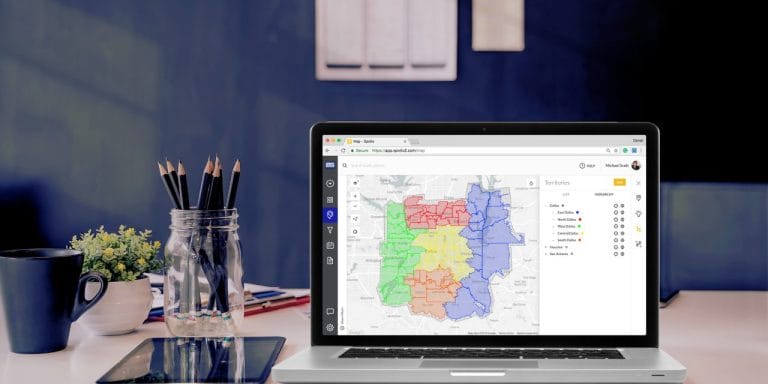As a salesperson, every exchange you have with a prospect can mean the difference between closing a deal—or losing a potential customer.
These exchanges give sales reps a chance to engage and show prospects why a product or service is a good fit for them. However, not all exchanges with prospects are equal. While one prospect might be looking for pricing specifics, another might ask a sales rep for proof from current customers that the product or service can help them with their specific problem.
If a sales rep isn’t equipped with the right toolkit to deal with each exchange quickly and effectively, it can impact the overall chances of making a sale. And that is where sales engagement comes into play.
Sales engagement lays out strategies and rules for sales reps to follow so their prospects get the right information at the right time in the sales cycle.
In this piece, we’re going to take a closer look at:
What is Sales Engagement?
How Sales Engagement Propels the Entire Sales Organization
What to Look for in a Sales Engagement Platform
Let’s get engaged.
What is Sales Engagement?
Sales engagement aims to improve every interaction a rep has with a prospect.
If a prospect is given more useful content or a rep has more time to spend on closing the sale, the more likely the sale will actually happen. Companies are starting to realize this, too.
Recent studies have shown that investing in sales engagement has become a high priority, with 90% of sales leaders planning to do so.
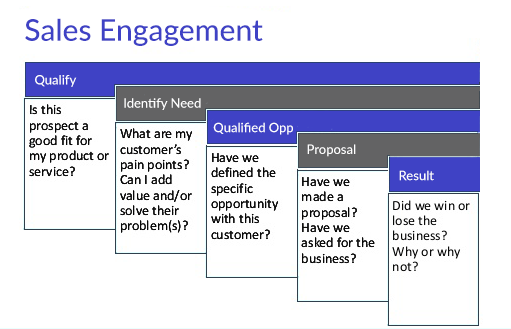
Sales engagement focuses on the ways we interact with prospects, like improving the content we give them or how customized our interactions are. The overall goal for sales teams taking this approach is to give their reps the right content and tools so they can answer each specific pain point for their prospects during the sales cycle.
Using sales engagement tools, exchanges between sales reps and prospects can then be tracked to see what worked—and what didn’t.
Sales Engagement vs Sales Enablement
Although the two terms are similar, there are some key differences between sales engagement and sales enablement.
Firstly, the core purpose of sales enablement is to give sales reps the resources they need to lead their prospects down the sales cycle. Sales engagement, on the other hand, is the technology that makes those resources available whenever a sales rep needs them.
While sales enablement internally empowers sales reps by giving them the tools to create and manage content, sales engagement measures how effective those resources are during exchanges with prospects, and helps automate and guide the sales process.
How Sales Engagement Propels The Entire Organization
Until now, we’ve talked a lot about how sales engagement gives reps the tools it needs to boost exchanges with prospects and measure effectiveness.
Here are six ways sales engagement actively helps your reps close deals.
1. Sales Engagement Improves Efficiency
Sales reps can’t be selling every minute of the day. But most sales leaders would hope that the majority of their time is spent selling or interacting with prospects.
The reality is only 39% of a sales rep’s time is spent doing that. The other 60% of their day is made up of administrative tasks like data input, answering emails and searching for more information.
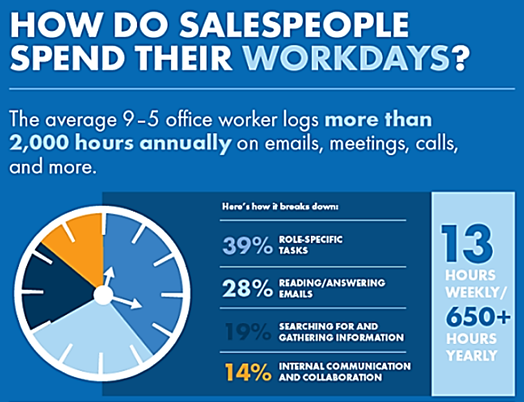
If a company embraces sales engagement technology, reps can spend more time selling and less of it answering emails.
For example, some sales engagement platforms can pull information from various platforms automatically. Instead of switching between platforms, sales engagement tools can pull data in from your CRM and online accounts to keep track of activities and even automate tasks like email replies.
Having everything in the same place means sales reps can focus more on selling, and spend less time on data entry and crafting email responses.
2. Sales Engagement Improves Workflow Across Selling Tools
Closing a sale is easier if every tool in your sales stack talks to each other.
Sales engagement does just that. Instead of sales reps having to jump between disparate platforms to talk to prospects, they can do it inside the same tool. Sales engagement combines communication channels like email, calls, social media and text messages so reps can engage prospects in one place.
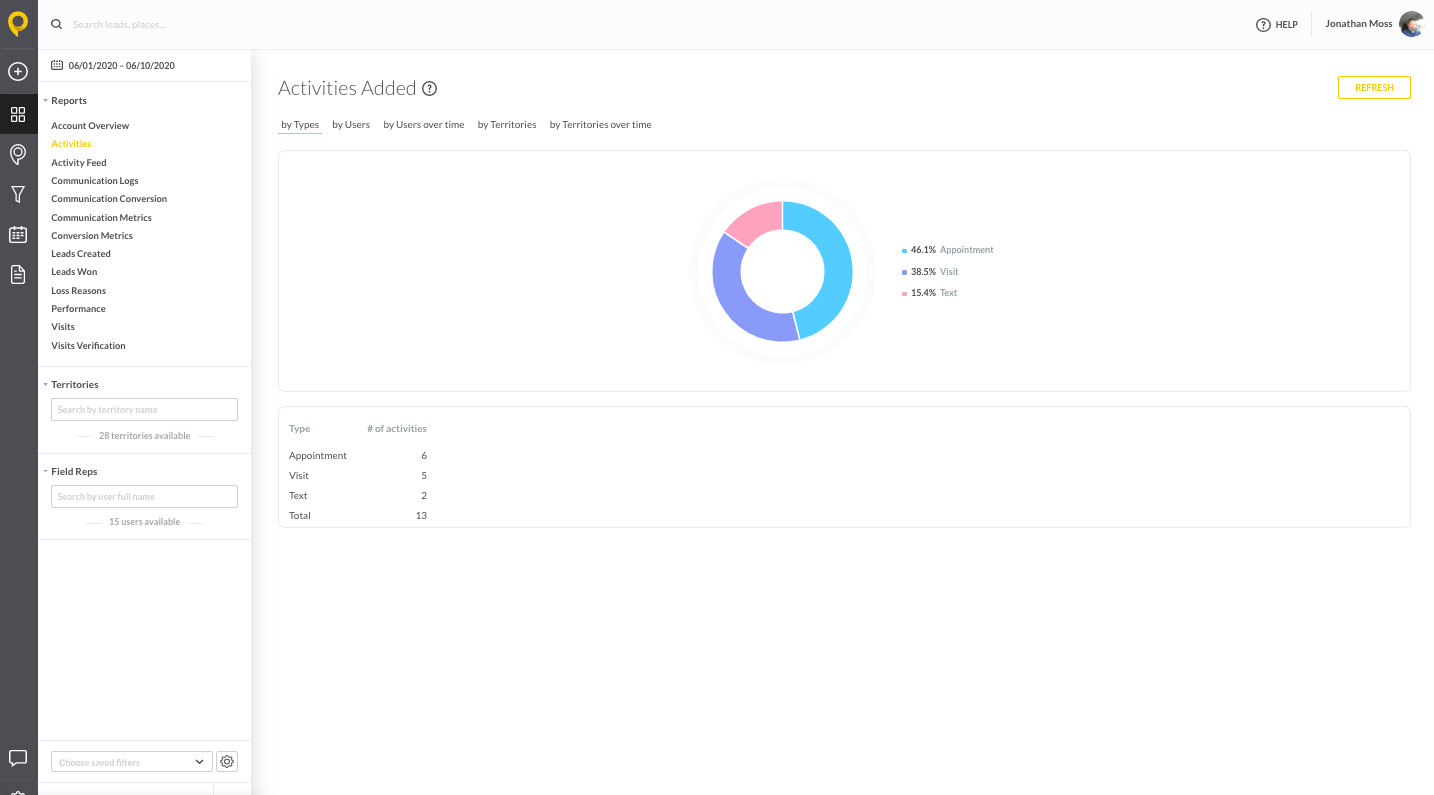
Sales engagement can even go a step further and automate communications. For example, if your platform has integrations with email services like Outlook or Gmail, your sales reps can then use automation to reply to prospects. Not only will this save reps a ton of time, but it can also boost the exchanges they have with prospects because they feel like they’re being looked after with quick replies.
Of course, these workflows and email exchanges are all tracked and measured in a sales engagement platform, enabling sales reps to tweak and test their messaging.
3. Sales Engagement Improves Training
Sales leaders are only spending 20% of their time helping their team close deals.
It’s not surprising, then, that after 90 days on the job, 84% of all sales training given to a new sales rep is lost. Sales engagement can help take the pressure off managers to give comprehensive training and provide a better onboarding process to new reps.
A sales engagement platform can boost your onboarding and training efforts as it:
Gives new sales reps access to material like sales playbooks your team is using to close deals.
Familiarizes them with tactics, strategies and content reps are using to start conversations with prospects and book meetings.
Shows them what data is used to set performance benchmarks.
Highlights where individuals and teams are performing well, and where they need to improve.
4. Sales Engagement Improves Content Management
The only thing worse than giving a prospect no content at all is trying to engage them with irrelevant content.
A study by CMO Council found that the top reason for a breakdown in engagement between sales reps and prospects was the use of irrelevant content. Considering how many tasks sales reps are trying to get done in their day, it’s hardly surprising that content management may not be at the top of their list.
Sales engagement can help make sure reps are giving out relevant nurturing content every time they’re talking with a prospect. A sales engagement tool essentially houses everything your rep needs to close a deal, so they can keep sales content and marketing materials like case studies and white books close by without having to search for them.
Not only that, most sales engagement tools have an inbuilt search feature. For example, if your sales rep is talking to a prospect that’s just entered their sales funnel, they might want to give them some content showing them how your product or service works.
If they’re closer to buying, however, the sales rep will want to send them materials that will help them close the deal, like positive case studies from current customers.
With sales reps spending an average of 440 hours per year just searching for the right content to send to prospects, sales engagement tools allow them to reclaim a huge chunk of their time.
5. Sales Engagement Improves Email Performance
Improving the quality and speed of emails between prospects and sales reps is hard. After all, your sales team only has so much time in their day to spend replying to emails.
Sales engagement can cut down on the amount of time reps spend emailing prospects and customers in a lot of different ways. Not only can the platform store useful tools like winning sales templates, it can also automatically email prospects to follow-up if they haven’t replied to a previous email.
The platform can improve your sales team’s email strategy by:
Tracking engagement rates like when emails are opened, what a prospect has clicked on, and if they’ve forwarded it onto someone else in the company.
Storing custom templates that you know work. If you’ve got an email that always closes a deal or gets a reply, you can store it in the sales engagement platform and use it to win over more customers. Even better, you can share it with other sales reps on your team so they can use it to close deals, too.
However, one thing that sets a sales engagement platform apart from other email tools is that it alerts reps when they should send emails.
Using data and analytics, sales engagement platforms can track opens, views and behaviors of a prospect, so your sales reps are sending them content and pitches at the ideal time to close a deal.
6. Sales Engagement Guides the Sales Process
Modern sales teams know that winning isn’t about just closing a deal today, but using the strategy behind it to close future deals, too.
Salesforce found that 50% of sales teams are now using data to build timely, accurate forecasts to help them sell smarter. A big benefit of sales engagement is using data and analytics to build a smarter selling process.
For example, a sales engagement platform will go beyond just storing emails and content. It will track how prospects are engaging with these channels so you can see what’s working and what’s not. If prospects are opening certain emails or answering phone calls at specific times of the day—the platform will track it so you can refine the specific steps in the selling process.
It’s easier to change and hone your team’s selling process if you have the data to back up those decisions. If you know that certain emails work better than others, or that a particular communication channel has higher response rates, you can then use that data to change the way your team sells.
What to Look for in a Sales Engagement Platform
Now that you know what sales engagement is, and how it improves process and performance, how do you decide on the best platform?
1. Data Quality
A sales engagement platform needs to go beyond just tracking email open rates.
It should have the capacity to keep tabs on accounts and opportunities, as well as tracking what’s happening in the news cycle like funding rounds and a prospect’s competitors. It should also be able to draw data from multiple sources to give your sales team the best overall look at how they’re performing.
Most importantly, the data collected needs to be captured and converted into statistics and figures your team can use to make their processes better. If you can communicate how certain sales channels are working better than others, or specific strategies are leading to more sales, it will empower managers to continually optimize the selling process.
2. Content Management
The right sales engagement platform will keep content organized and accessible so your reps can use it whenever they need.
Here’s the thing—content management in a sales engagement platform goes beyond how documents are stored in the cloud. Not only is content stored and organized in a way that reps can find them easily, but it will also track assets and flag if they’re up to date. If a case study or contact details haven’t been updated for some time, they can be flagged to be updated or replaced.
3. Multi Channel Communication
Sales reps don’t just rely on phone calls anymore to close deals.
They need to manage many communication channels, like email, SMS, social media, and chatbots. If your reps are juggling these channels across separate platforms, it’s easy for prospects to fall through the cracks.
Using a sales engagement platform brings all of these communications into one tool so reps can communicate with prospects easily—no matter what channel they’re using.
For example, SPOTIO helps sales reps connect with prospects based on their preferred channel.
For example:
If a prospect prefers to talk business over the phone, a rep can call or send text messages directly from the platform. And as the communication is all being done under the same platform, SPOTIO tracks every single interaction so it can be analyzed.
If a rep wants to look at how much time they’re spending trying to close a deal or check what communication channel a prospect prefers, they just need to pull up the data:
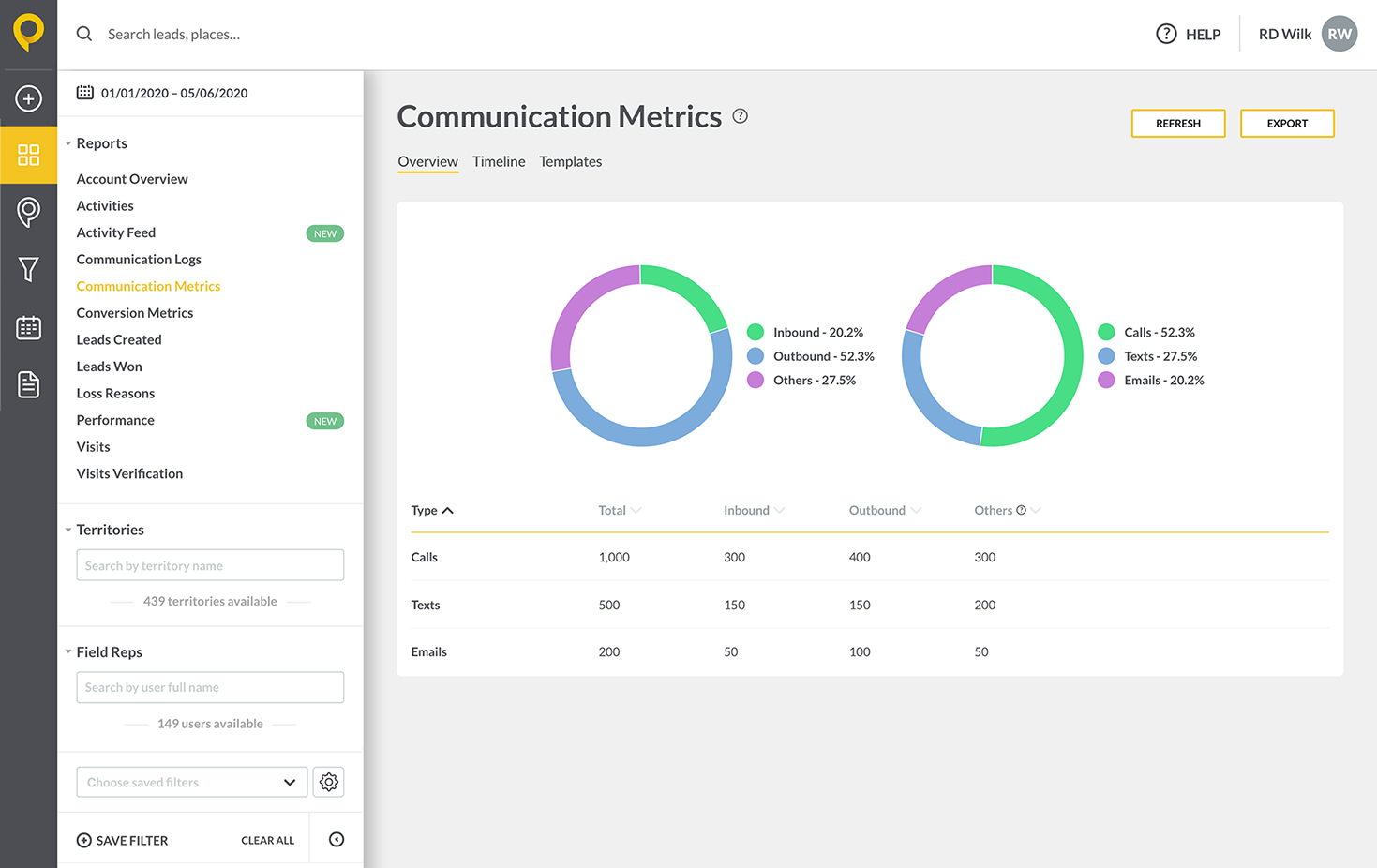
4. Guided Selling
Guided selling is one of the biggest perks of using a sales engagement tool because it’s like giving each sales rep on your team their own personal assistant.
Instead of guessing what moves they should make next with a prospect, guided selling gives reps recommendations based on the stage of the sale and the context of the deal. Studies have found teams that use guided selling are 2.3 times more likely to close than sales reps who don’t have any help.
A sales engagement tool gives sales reps suggestions about what moves they should make next, which is backed up with real-time reports and data of how the deal is progressing.
Using SPOTIO, sales managers have access to real-time activity logs of every prospect interaction, which they can use to train sales reps. These interactions can be broken down into territories and teams to see who is performing best, and who needs a little help.
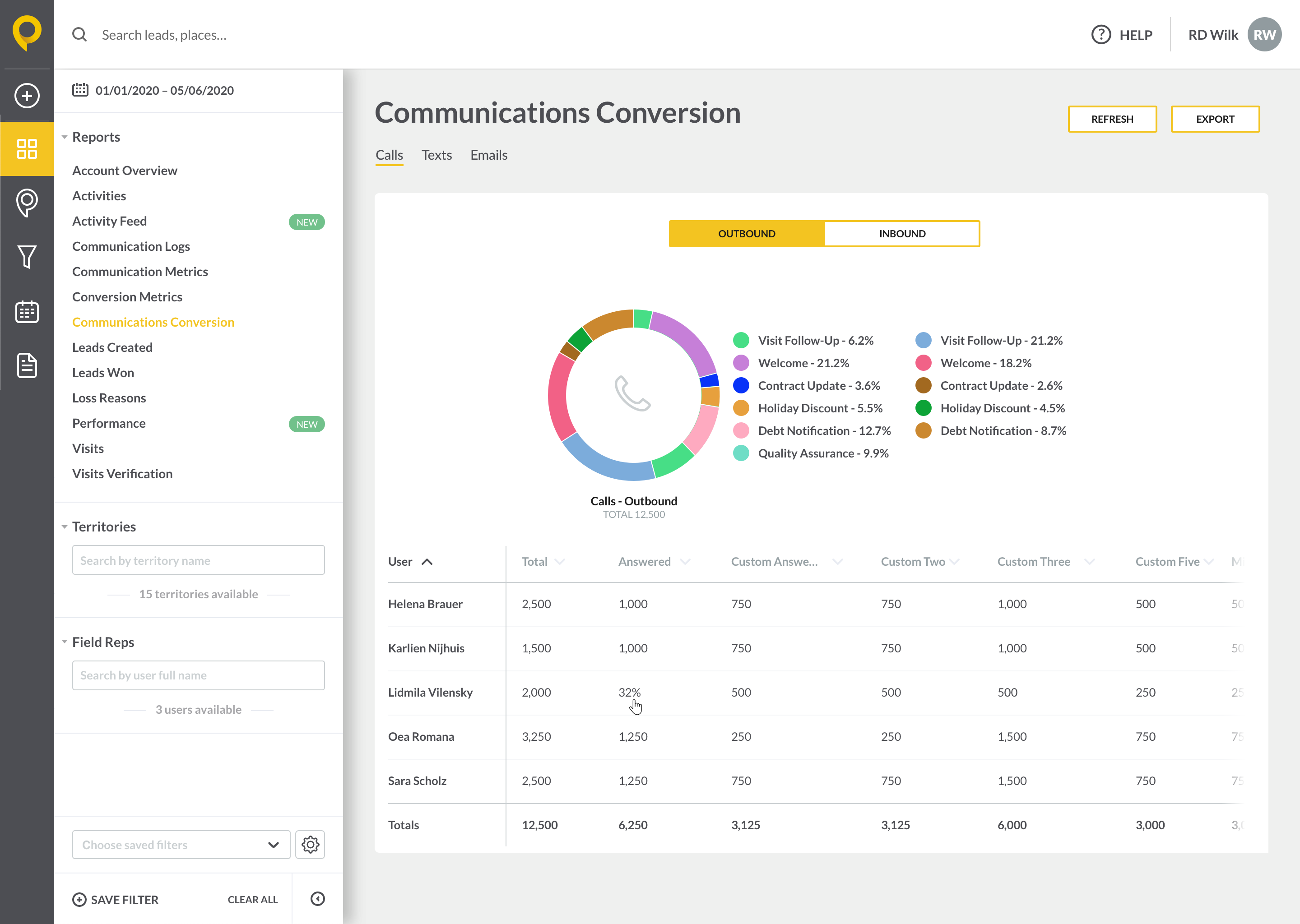
5. Reporting and Analytics
The proof is in the data.
The beauty of a sales engagement platform is that as every activity and interaction with a prospect is happening inside the tool, everything is tracked. This gives sales leaders and reps unique insight into what’s working and what can be improved in the company’s selling process.
While some sales engagement platforms will have limited tracking abilities, others can analyze everything from how well territories are converting to how many doors your reps are knocking.
6. Integrations
Finally, making sure your entire sales stack can integrate with your sales engagement platform is important.
Ideally, you will be able to integrate all of your existing sales tools so every piece of data and content will be accessible from day one. If an app or tool your company is using is not listed on a sales engagement platform’s integration list, you should still be able to plug it in using an API or a webhook.
Remember, making sure your workflow is seamless will save your team a lot of headaches when you move over to a sales engagement platform. If you can’t find a way to plug in all of your existing sales apps—find a platform where you can.
Level-Up Your Sales Engagement Process
The sales industry is changing.
It’s no longer enough to use email to close a deal or to use a spreadsheet to store phone numbers. Now, sales reps need to be able to sell smarter across a larger number of consumer touchpoints and channels.
As the data shows, companies that invest in sales engagement platforms are able to onboard and train new reps faster, increase the amount of time reps spend selling, improve processes, and as a result, sell more products or services than the competition.
Are you going to invest in a sales engagement platform in 2020?
______________



